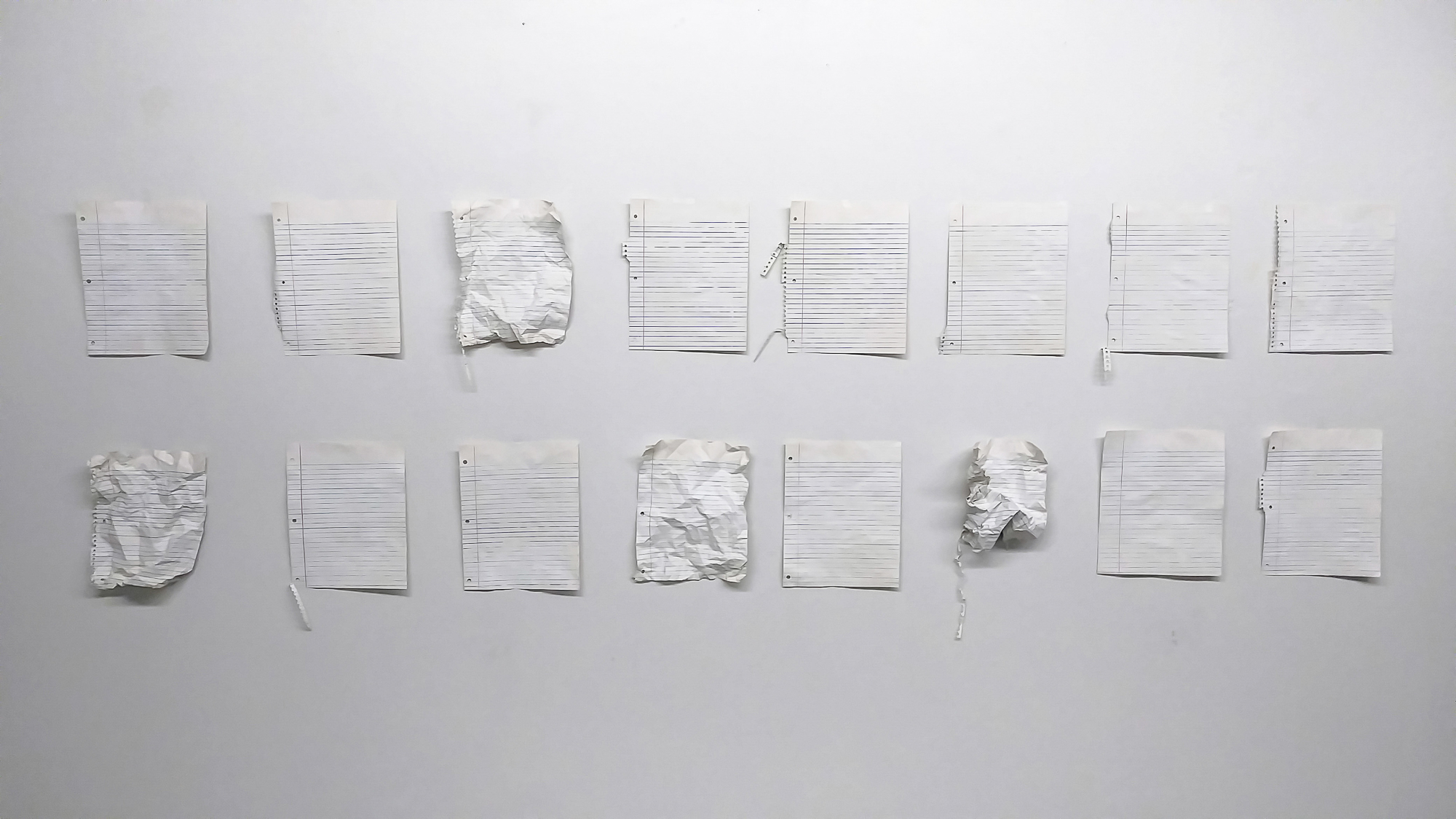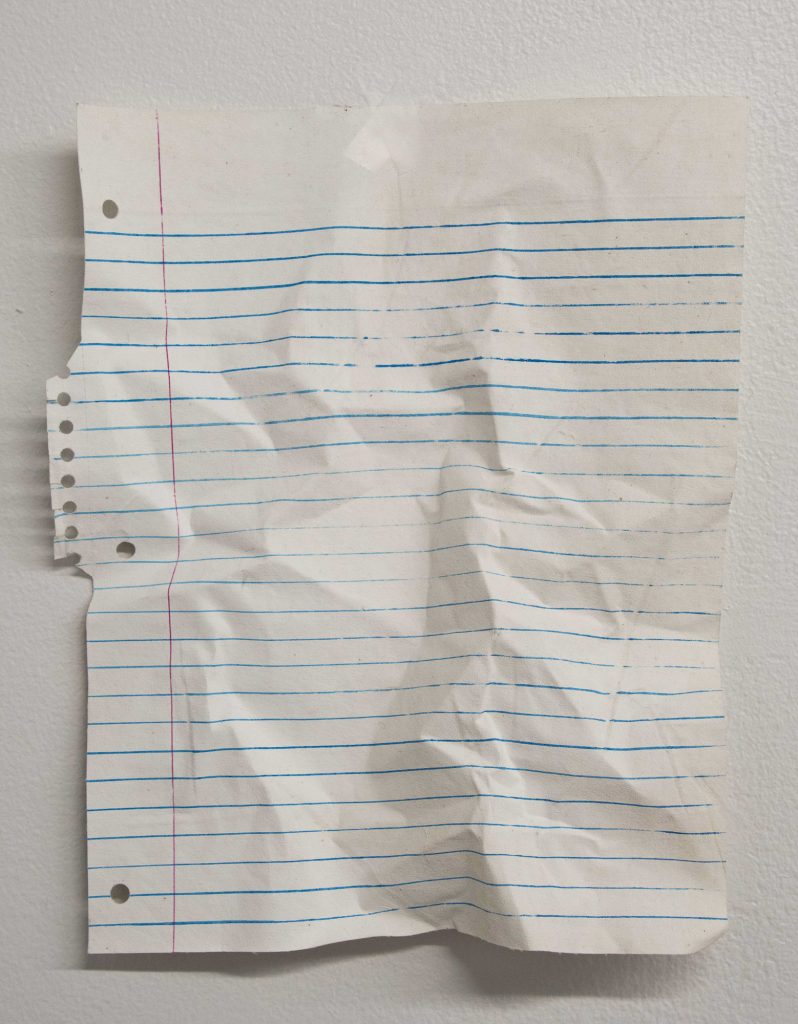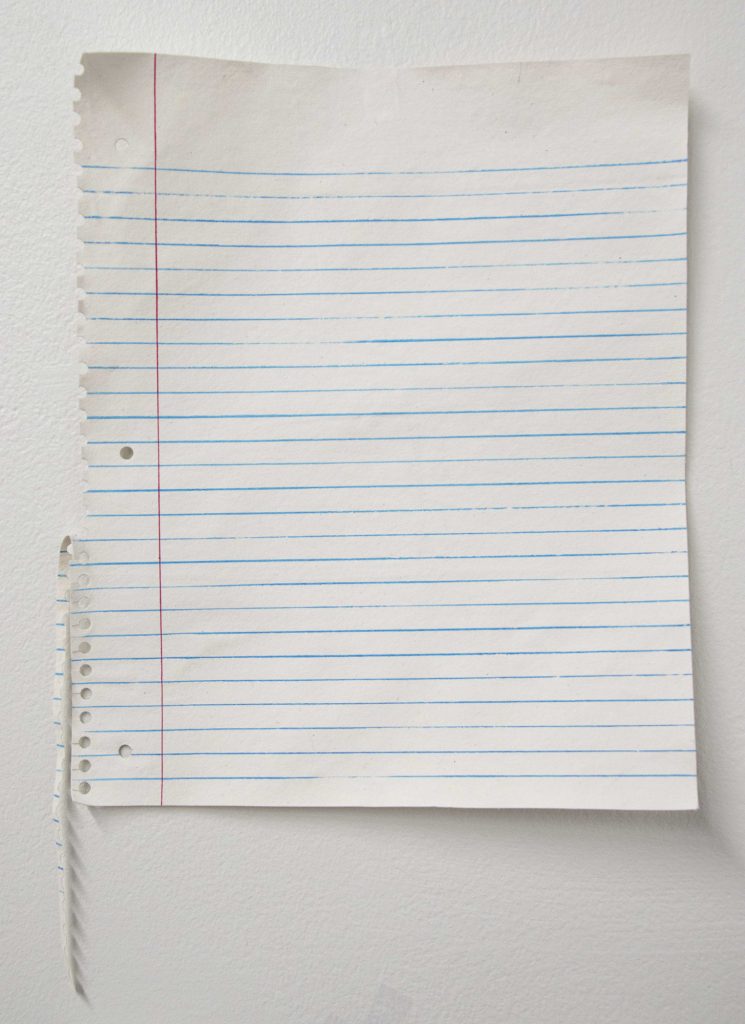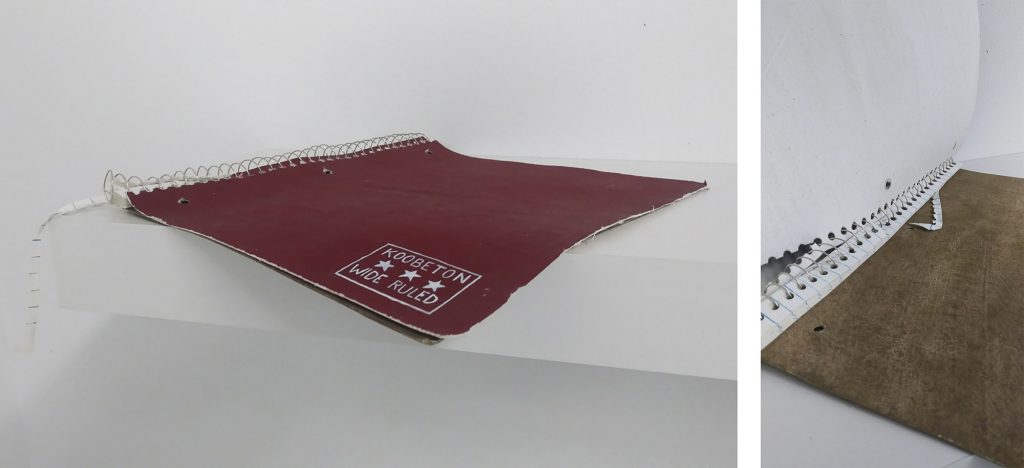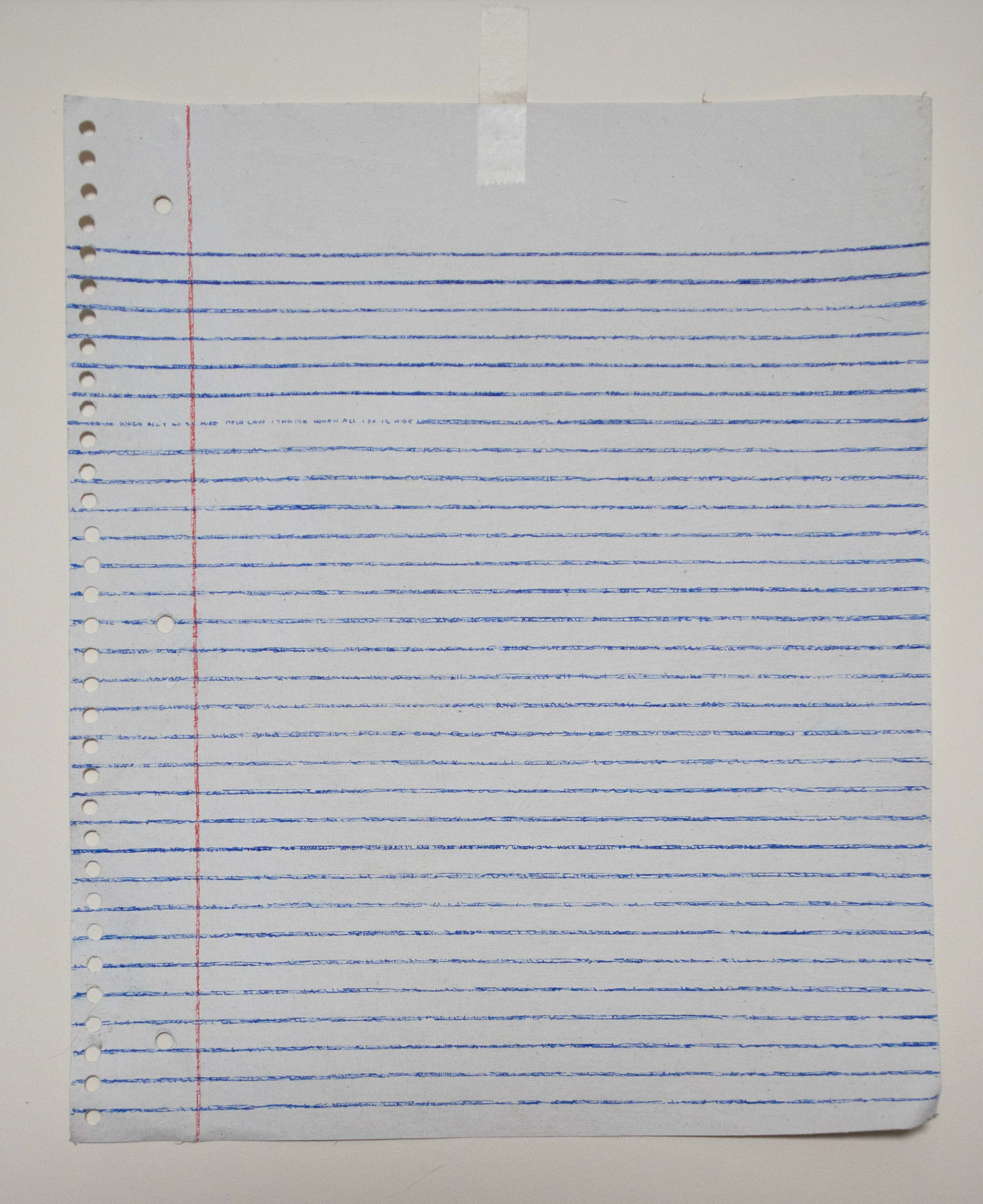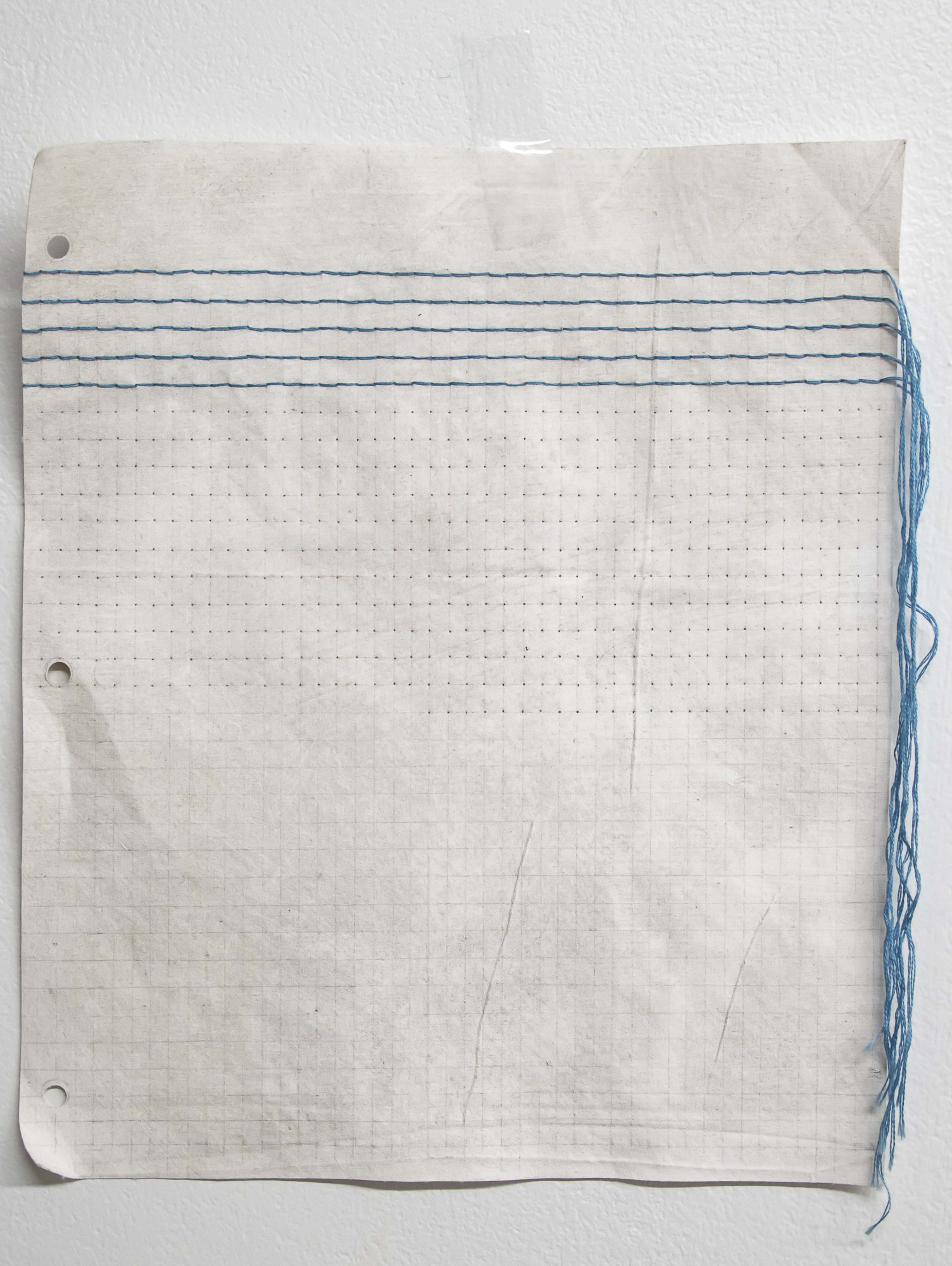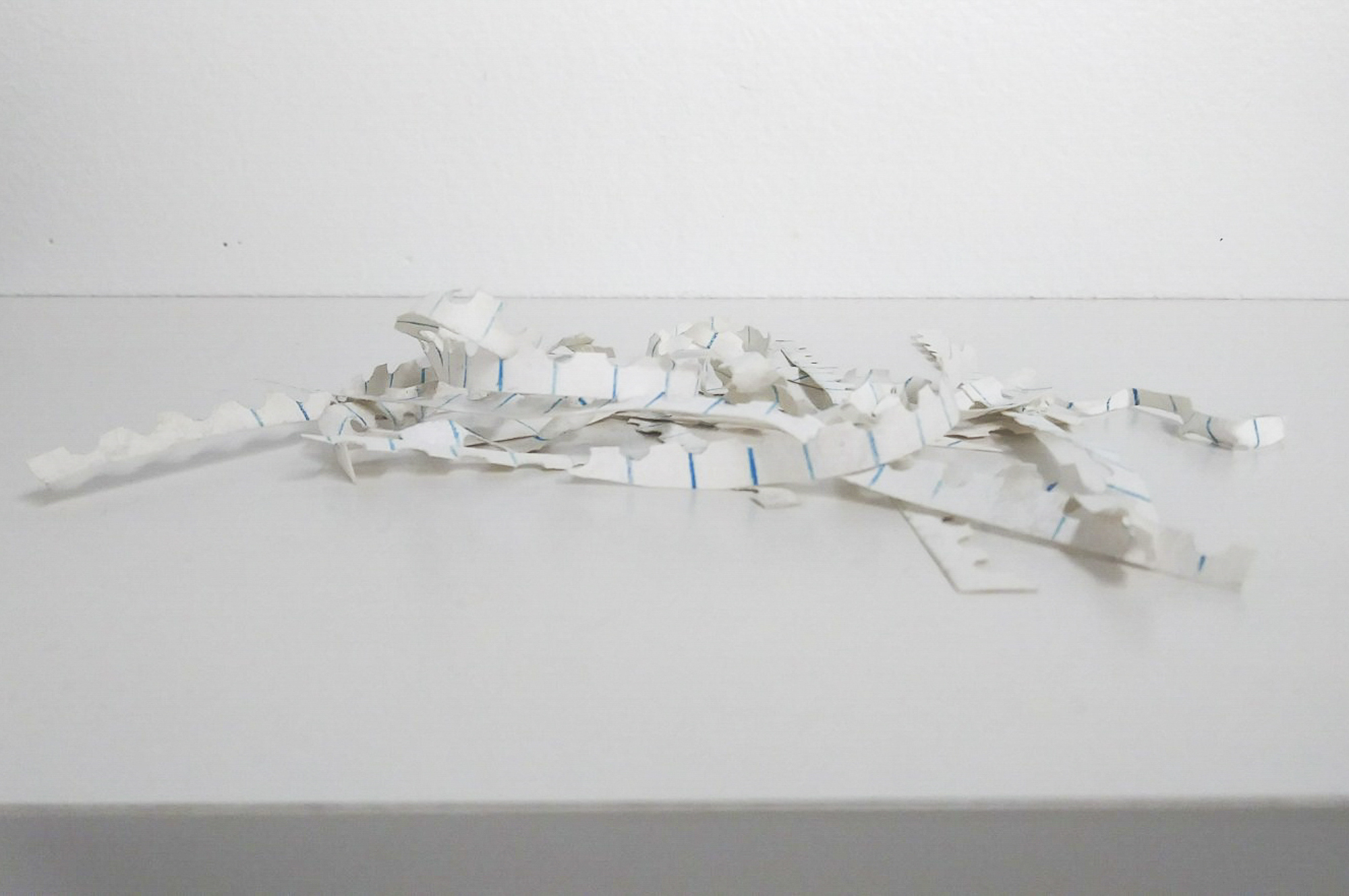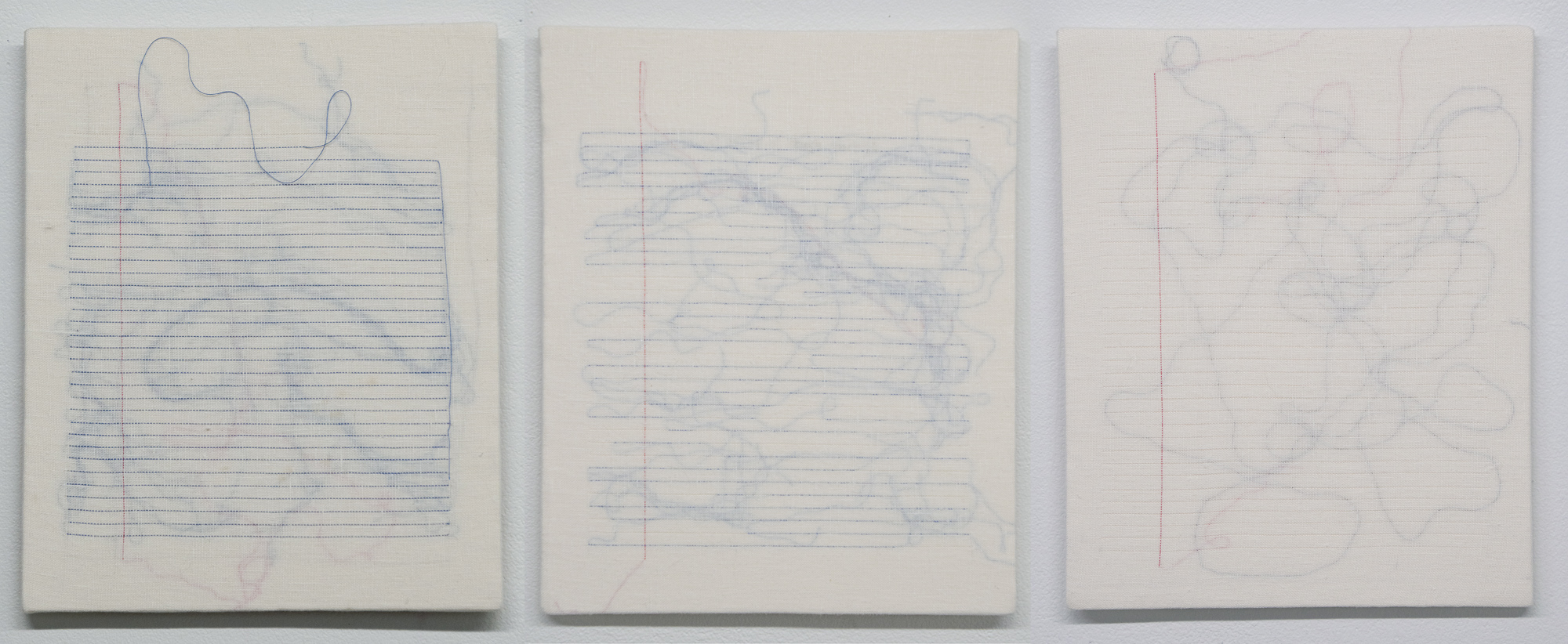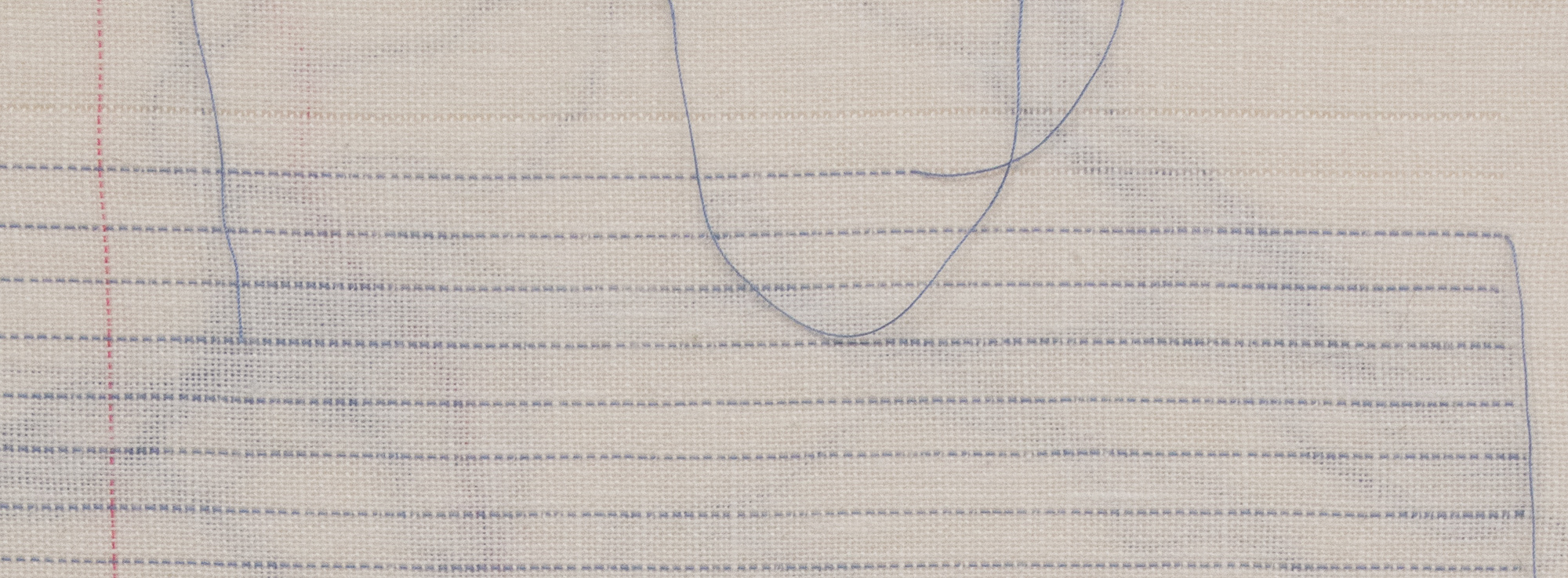In this work, what appears to be sheets of notebook paper is actually cotton muslin fabric that I have hand painted to look like notebook paper. This action, to recreate a banal object in a time consuming and meticulous manner, is a process that utilizes trompe l’oeil as a way to deceive the eye and hide in plain sight. These paintings of notebook paper are merely a substrate without words, filled with blank space meant for communication. Their emptiness is stark and merely a facade, holding the words under the surface. Many of these pieces have snippets of memories written in graphite directly onto the naked fabric before they are painted. These hidden truths lie under the surface, only to reveal themselves under close inspection. It is this internal truth that is in conflict with the quiet, empty surface that presents itself to the world.
The hidden voice lives in different ways throughout this body of work. While, in some pieces the words are written under the surface or so small that it becomes illegible, in others, the language is only a suggestion, abstracted by threads. In the fabric pieces, each linen thread, snipped and unwoven warp by warp, is replaced with a new silk thread. The thread removal weakens the structure of the fabric and scars the surface, which is then replaced with a stronger fiber, rewoven into the original linen warp. The memory of trauma can leave traces on the surface of the body like scars, but most of the time it lives completely hidden, invisible under the skin. This memory of trauma lives deep in the body resurfacing as a physical reaction to recoil away from the closeness of another person. In the reactive kinetic work, I have given the painting its own autonomy, reacting to the presence of the viewer. The painted fabric “notebook paper” closes in on itself as the viewer approaches, mimicking the physical recoil that can occur with the human body. Only as the viewer moves away, will the closed painting open up again, sitting in its relaxed state on the surface of the table. Utilizing these processes and modes of making through obscuring, removing, and replacing, changes the materiality of seemingly banal objects and making strange that which should be familiar.
